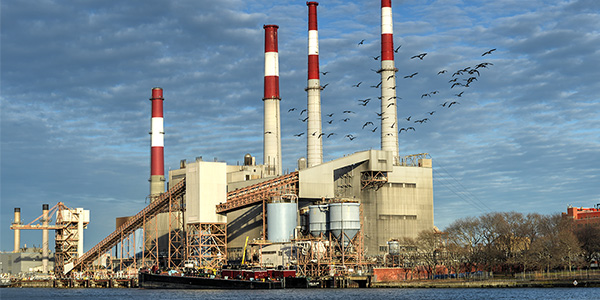New York will see an increase in new natural gas plants and the hours of operation of existing gas plants after the state’s Indian Point Nuclear Energy Center closes in April, New York State Energy Research and Development Authority Board Member John B. Rhodes said Wednesday.
However, the long-term role of natural gas in the state’s energy grid is still unknown, he said during a webinar in Our Energy Policy’s Energy Leaders series.
As states in the Northeast grapple with balancing decarbonization with energy reliability and affordability, there is a possibility that thermal power generation, or energy produced by burning liquified natural gas to convert it into electric energy, “needs to be a part of that mix,” Rhodes said. But other solutions, such as battery storage and dynamic load, or adjusting the load demand on the electrical power grid to balance overall grid load with generation, are promising alternatives.
“Our pathway to backing down gas from the power grid is much clearer than it is for heat,” Rhodes said.
Rhodes is confident the state will reach its goal of 70% renewables by 2030 set by the Climate Leadership and Community Protection Act in 2019, but “it’s always the case that the last megawatt-hours are the hardest to get.”
The phase out of natural gas from the heating industry, however, has a solution gap, Rhodes said. “Buildings in general are a tough sector for energy transition.”
According to Rhodes, the building sector is not centered on how buildings use energy; it is centered around serving the people that are in them.
Investing in Mitigation
Another challenge to weaning the heating sector off oil and natural gas is buy-in from consumers, Kyle Kimball, vice president of government, regional and community affairs at Consolidated Edison, said during the webinar.
“One of the biggest challenges is uptake — or getting the building decision maker or homeowner to say yes to upgrades” that would improve heat insulation, Rhodes added.
Property owners can be hesitant to go through the disruption that structure upgrades can entail. But consumer attitudes are changing.
A new poll by the MassINC Polling Group, sponsored by the Barr Foundation and conducted with input from the Massachusetts Executive Office of Energy and Environmental Affairs, found that residents are highly supportive of policies that would help them upgrade their homes, especially incentives for utility companies to help make customers’ homes more efficient.
Although most residents are satisfied with the heating setup they already have, the poll found evidence that those who have made the switch to renewables are glad they did. And a third of those who currently heat their homes with electricity from the grid say their top choice would be electricity that comes from solar.
Rhodes said that in his experience the “awareness and appetite to invest to avoid climate change is a lot higher in 2021 than it was in 2013.”
There remains, however, room for innovation in improving a building envelope practically and affordably to move away from energy sources like natural gas, Rhodes said.





